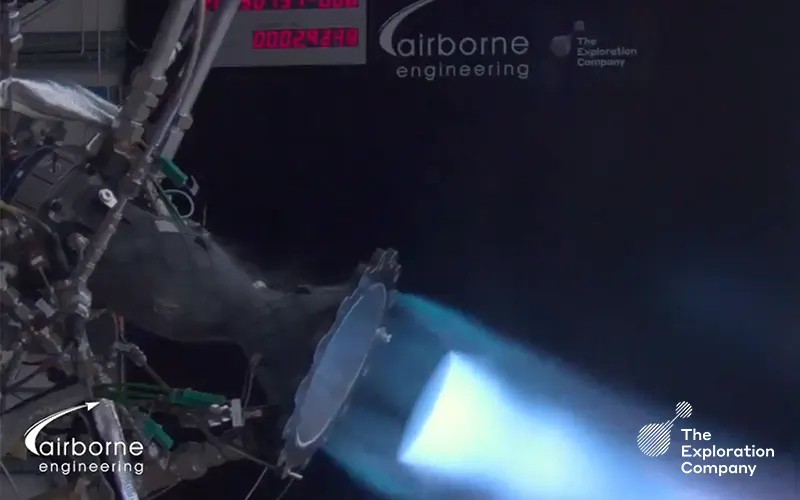The Exploration Company has completed a hot fire test campaign for the thrust chamber of its Huracan rocket engine. The testing put the fourth prototype of the thrust chamber through its paces, including introducing deliberate pressure disturbances to assess its performance under stress.
Developed to power The Exploration Company’s Nyx Moon spacecraft, the Huracan engine will support missions to both lunar orbit and the Moon’s surface. While the company has not recently updated progress on its Nyx Moon spacecraft, a late-2024 presentation projected completing an inaugural mission to the Moon’s surface in 2029. The presentation also revealed that the service would offer capacity for commercial payloads at a cost of around $200,000 per kilogram.
On 7 August, the company announced that it had completed a series of 11 hot fire tests of the fourth iteration of the Huracan engine’s thrust chamber. A thrust chamber is the part of a rocket engine where fuel and oxidiser mix and combust, producing hot gases that are then expelled through a nozzle to generate thrust. This version of the Huracan’s thrust chamber employs a lighter and simpler chamber architecture that reduces overall production time.
The test campaign was conducted at the Airborne Engineering testing facilities in Westcott, England. According to the company’s 7 August update, the testing, which involved imposing deliberate pressure disturbances, validated the thrust chamber’s high-frequency combustion stability, ensuring that it can manage rapid pressure oscillations that can occur during combustion without compromising performance or structural integrity.
In addition to the thrust chamber itself, testing was also focused on the company’s newly developed GOX/GCH4 ignitor. According to the company, the ignitor performed as expected with “zero missed starts.”
While the company prepares for missions to the Moon, its near-term goal is closer to home. It is preparing for the inaugural flight of Nyx Earth, which will transport cargo to and from low Earth orbit. On the road to that first flight, the company plans to launch a third subscale prototype after its Mission Possible demonstrator failed moments before parachute deployment earlier this year. The company has not yet shared when it expects to launch this third demonstration mission.
